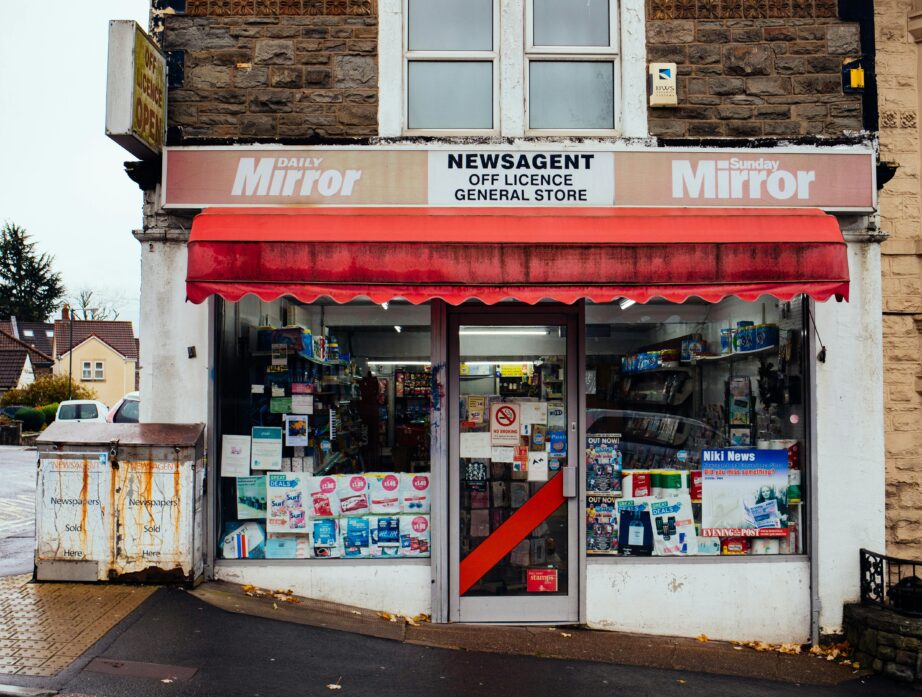
When people search for a service or product in your area, you want your small business to be the one they find first. That’s where Local SEO comes in. It’s not just about showing up in search results—it’s about showing up for the right people at the right time. Whether you’re running a cozy café, a boutique, or a local repair shop, getting your business to rank locally can make all the difference.
In this guide, we’re diving into the must-know strategies to help your small business succeed with Local SEO. From optimising your Google Business Profile to mastering local keyword research, we’ll cover everything you need to get your business in front of nearby customers. Ready to start driving more local traffic? Let’s get into it.
What is Local SEO and Why Does It Matter?
Local SEO is all about making sure your business shows up when people search for products or services near them. Think of it as making your business visible on the digital map. It involves optimising your online presence so that your business appears in local search results on platforms like Google and maps apps. This means when someone types in “best coffee shop near me” or “plumber in [your city],” your business is one of the first they see.
If you’re not showing up in local searches, you’re leaving money on the table. Stats show that people are increasingly searching for businesses “near me,” and those searches often lead to in-person visits. In fact, studies have shown that nearly 80% of local mobile searches result in an in-store purchase within a day! That’s why ignoring Local SEO can be a big mistake. It’s not just about being found; it’s about connecting with potential customers right when they’re ready to make a decision. By focusing on Local SEO, you’re not just promoting your business; you’re making it easy for people in your community to discover what you offer and, ultimately, choose you over your competitors.
Understanding the Local Map Pack
Local Map Packs are vital components of search engine results pages (SERPs) that showcase top businesses relevant to a user’s location. Appearing prominently above the organic search results, these packs help users quickly discover local options, whether they’re searching for a restaurant, service provider, or retail store.
8 Core Strategies for Succeeding with Local SEO
1. Claim and Fill Out Your Google Business Profile
Your Google Business Profile (GBP) is the first thing potential customers see when they search for your business. It’s like your online storefront. To optimise your profile, make sure to include accurate contact information, engaging photos that highlight your products or services, and your business hours. Regularly update your profile with new posts and offers to keep it fresh and engaging.
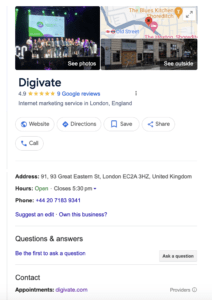
Encourage your happy customers to leave reviews, and don’t forget to respond to every review, including the negative ones. This interaction shows that you value customer feedback and are dedicated to providing a great experience.
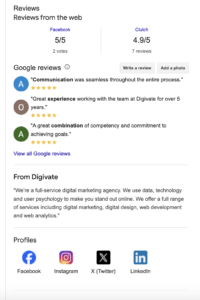
2. Conduct Local Keyword Research
Understanding what your customers are searching for is key to effective Local SEO. Start by brainstorming phrases that potential customers might use, like “best coffee shop in [your city]” or “affordable plumber near me.” Use tools such as Google’s Keyword Planner, Semrush, and Ahrefs to find relevant keywords that resonate with your audience.
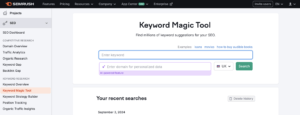
Pro tip: Avoid keyword stuffing. Instead, integrate these keywords naturally into your website’s content, headings, and meta descriptions to enhance readability and SEO performance.
3. Optimise Your Website for Local Search
Make sure your website is optimised to reflect local search intent. This includes writing title tags, meta descriptions, and headers that include your local keywords. If your business serves multiple locations, create dedicated landing pages for each area you serve to attract localised traffic.

Incorporating local phrases into your website’s navigation, page titles, and meta descriptions is a game-changer for attracting local visitors. When potential customers search for services or products in their area, they often use specific terms related to their neighbourhoods or local landmarks. By including these local identifiers, you can significantly enhance your chances of showing up in relevant searches.
Include your full business address and embed a Google Map on your contact page. This not only helps customers find you but also signals to search engines that you’re a legitimate local business.
4. Build and Manage Local Citations
Citations—mentions of your business name, address, and phone number (NAP) on other websites—are crucial for Local SEO. The more consistent these mentions are across the web, the better your chances of ranking higher in local searches.
Regularly audit your citations on platforms like Yelp, TripAdvisor, and Facebook to ensure accuracy. Consistency is key; even small discrepancies can hurt your visibility.
5. Get Local Backlinks
Backlinks from other reputable websites act as votes of confidence for your business. The more local, high-quality backlinks you have, the better your chances of improving your local SEO.
Reach out to local bloggers, sponsor community events, or get featured in local news articles to earn backlinks. Remember, quality trumps quantity; focus on securing links from respected local sources to boost your credibility.
6. Ensure Mobile Optimisation
With a growing number of customers searching for businesses on their mobile devices, having a mobile-friendly website is critical. If your site isn’t optimised for mobile, you risk losing potential customers.
Use Google’s PageSpeed Insights tool to assess your site’s performance on mobile devices. Prioritise speed and easy navigation to create a seamless experience that encourages visitors to engage with your business.
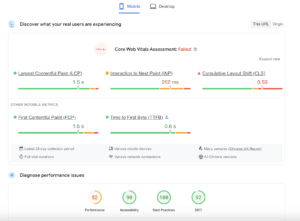
7. Track Your Success (& Failures)
Use Google Analytics or Other Tools Like Semrush
- Set up Google Analytics on your website if you haven’t already. This free tool will help you track user behaviour, traffic sources, and more.
- Navigate to the “Acquisition” section to see how visitors are finding you. Look for traffic from local searches, organic search, and referral sources.
- Use the “Geographic” report to see where your visitors are located. This can help you determine if your Local SEO strategies are effective in attracting nearby customers.
- If you prefer more robust features, consider Semrush or similar tools. These platforms offer in-depth analysis, keyword tracking, and competitor insights that can enhance your SEO strategy.
Google Business Profile Insights
- Log in to your Google Business Profile and navigate to the “Insights” tab.
- Review important metrics such as the number of views your listing has received, how many people clicked to visit your website, and how many requested directions to your business.
- Pay attention to the “Calls” section to see how many customers called your business directly from your listing. This metric is critical for understanding customer engagement.
- Track these metrics regularly to identify trends over time. If you notice a spike in calls or direction requests after implementing a specific Local SEO strategy, you’ll know what’s working!
8. Create City-Specific Pages
If your business operates out of multiple locations then this one is for you. City-specific landing pages help search engines understand that your business is relevant to users in those areas.
Each landing page should include the following elements to maximise its effectiveness:
- Localised content: Write unique content that speaks directly to the residents of that city. Highlight local events, partnerships, or community involvement to make the page feel relevant.
- Targeted keywords: Use city-specific keywords throughout the page, including in the title tag, headers, and body text. Phrases like “best [service] in [city]” can be beneficial.
- NAP information: Ensure that your business name, address, and phone number (NAP) are prominently displayed and consistent with other listings.
- Local testimonials: Include reviews or testimonials from customers in that specific city to build trust and show your local engagement.
- Calls to action: Encourage visitors to take action, whether it’s to call your business, fill out a contact form, or visit your physical location.
Make sure each city landing page is unique and not just a rehashed version of another page. Search engines can penalise duplicate content, so tailor each page specifically to the local audience. Also, consider adding a map or directions to your physical location in that city to make it easy for customers to find you.
Common Local SEO Mistakes to Avoid
When it comes to Local SEO, even small missteps can lead to missed opportunities. Here are some common mistakes to watch out for:
1. Incomplete Google Business Profile
Your Google Business Profile is often the first point of contact potential customers have with your business. If it’s incomplete, you risk losing their interest before they even engage. Ensure every detail is filled out, including your business name, address, phone number, website, and hours of operation. Add high-quality images that showcase your products or services and keep your information up-to-date. A fully optimised profile can significantly enhance your visibility in local search results.
2. Ignoring Mobile Users
With most people searching for local businesses on their phones, neglecting mobile optimisation is a huge mistake. Your website must be mobile-friendly to cater to these users. This means having a responsive design, fast loading times, and easy navigation. Test your site on various mobile devices to ensure a seamless experience. If your site isn’t optimised for mobile, you risk losing potential customers who could be looking for your services right now.
3. Not Managing Reviews
Customer reviews are a crucial part of Local SEO and can greatly influence potential customers’ decisions. Ignoring them is a missed opportunity to engage with your audience. Make it a habit to respond to all reviews, whether they’re positive or negative. Acknowledging feedback shows that you value customer opinions and are committed to improving their experience. Encouraging satisfied customers to leave reviews will also enhance your credibility and local rankings.
4. Inconsistent NAP Information
Your business’s name, address, and phone number (NAP) should be consistent across all online platforms. Inconsistencies can confuse search engines and potential customers, negatively impacting your local search rankings. Regularly audit your online listings to ensure that your NAP information matches on your website, social media, directories, and review sites. A consistent presence helps build trust with both customers and search engines.
Conclusion
Local SEO isn’t just for big businesses; with a little effort and attention to detail, small businesses can dominate their local markets. By avoiding common mistakes and implementing effective strategies, you can enhance your online visibility and attract more local customers.
Need help getting your small business ranked locally? Contact our SEO specialists today and start attracting more local customers! Let us guide you through the process and help you make the most of your Local SEO efforts.



